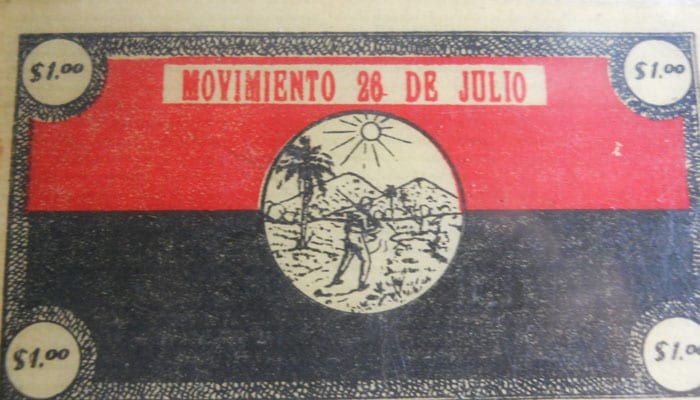Collecting Donations for the Revolution
Elio Delgado Legon

HAVANA TIMES — The fight against Batista’s dictatorship (1952-1958) was a heroic feat in the country’s larger cities. The young revolutionaries who fought against that criminal regime had to pay a high price in blood, a really high price. However, they kept his repressive forces in check for all of the seven years that this infamous regime lasted.
In smaller towns in Cuba’s interior provinces, our struggle was also effective, however, less heroic because we didn’t have an underground movement. In a small town, everybody knows everybody and the police knew everybody so they were able to keep us under control. It was more difficult for us to mobilize.
Personally, I began my revolutionary struggle in 1954, when I was 17 years old and inexperienced, therefore giving myself immediately away and was labelled a revolutionary.
My key tasks involved recruiting young people who were ready to fight when the moment came, carrying out acts of economic sabotage and collecting funds for the Revolution, and by seeking donations for the 26th July Movement.
On May 15, 1955, Fidel Castro and the rest of his companions who attacked the Moncada Barracks and the Barracks of Carlos Manuel de Cespedes on July 26, 1953, were released from jail under popular pressure.
A few days later, Fidel left for Mexico with the objective to prepare an expedition and return to fight the dictatorship from Cuba’s mountains.
In early 1956, a lawyer friend of mine, who belonged to the Authentic Organization, told us that he would travel to Mexico in order to meet with Fidel and we saw it as an opportunity to send some money to the Revolution’s leader. We figured we could collect donations amongst those who had the economic means to support the Revolution.
Four of us created a committee, who under my leadership, would visit these people to collect donations and then we’d send it to Fidel in Mexico.
It goes without saying that before we were able to complete our task, the police had already found out about what we were up to and they sent one of them to arrest us. We were at a store talking to its owner when the policeman arrived and asked us to go with him to the station.
We walked out towards the station which was about seven blocks away, and as we passed a newspaper stand, I stopped to read the headlines which had caught my attention and the policeman kept on walking with the other three without noticing.
At that moment, I could’ve taken off in another direction and hidden, as they’d already walked more than a block. However, I felt like I was the most responsible, as I was the leader, and I couldn’t behave like the typical do-little, so I picked up my pace until I reached my other three companions. Then, the policeman looked at us and exclaimed: “Huh? You were three and now you’re four?”
They charged us, without having any evidence of holding “an illegal meeting” I believe it was. However, the court absolved us because there was no evidence.
The money we’d collected was then sent to Fidel in Mexico, our small contribution to the Revolution.






The penultimate sentence of the second paragraph is revealing:
“In a small town everybody knows everybody and the police knew everybody so they were able to keep us under control.”
As Elio well knows for Fidel Castro, the police were not sufficient and on September 28th 1960, he added and introduced the CDR thus ensuring that not just in the small towns, but across the whole of Cuba, the regime knows who lives on every block, what they do on every block, in what activities they are involved and with whom they meet. There is an annual report on every citizen made to MININT and those identified as dissidents are jailed – as reported in these pages just under 800 were jailed in March alone. Elio was charged and released because he says: “there was no evidence”. How fortunate he was, for no such niceties are necessary under a system where the accused is jailed as guilty unless given a trial and able to prove innocence.
I was also interested in Elio saying that following Batista granting amnesty to the Castro brothers after only two years in jail, that: “A few days later, Fidel left for Mexico”. In those “few days” Fidel can have had little rest, for during that period four women conceived children by him and born in 1956. They were:
Natalia Fernandez gave birth to Alina
An unidentified woman gave birth to Francisco Pupo (known as Panchita)
Mirta Diaz-Balart gave birth to Fidel Angel known as ‘Fidelito’ now a nuclear scientist
Maria Laborle gave birth to Jorge Angel
Elio is a little bit selective in his facts and a little inaccurate with his dates, but tempus fugit.